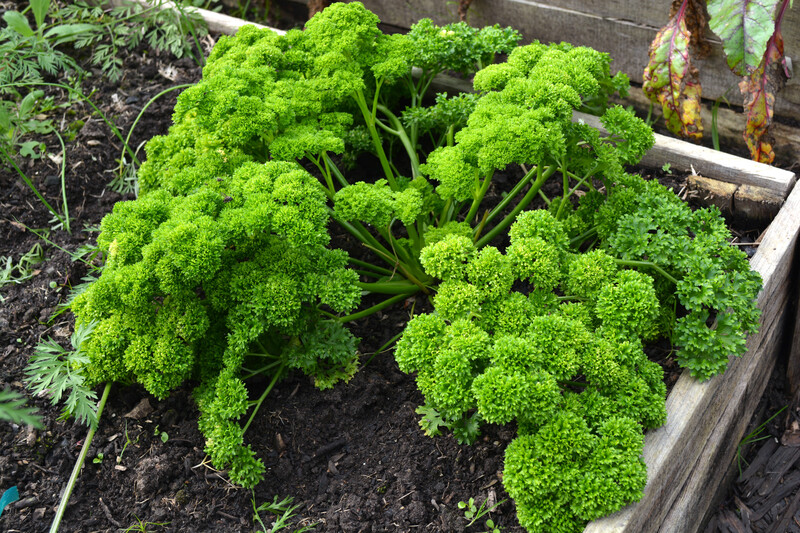Beat the Heat: Ways to Avoid Drought Stress in Your Lawn
Taking care of your lawn during hot, dry spells can be challenging, but with strategic care and proper techniques, you can help your grass withstand the heat and avoid drought stress. This comprehensive guide will provide you with expert tips and proven strategies to keep your turf green and resilient all summer long. Whether you're a seasoned gardener or a first-time homeowner, you'll find actionable advice for preventing, identifying, and managing drought stress in your lawn.
Understanding Drought Stress in Lawns
Drought stress occurs when your lawn doesn't receive enough water to meet its growth and survival needs. In periods of high temperatures and low rainfall, the soil quickly dries out, and grass roots struggle to access deep moisture. Signs of drought stress include:
- Grass turning bluish-gray or dull green
- Footprints staying visible after walking
- Slow growth or no growth
- Wilting blades
- Browning or patchy areas in the turf
Recognizing these symptoms early is essential for protecting your lawn from heat stress and maintaining its lush appearance.

Choosing Drought-Tolerant Grass Varieties
The foundation of a heat-resistant lawn is selecting the right grass species. Certain turf varieties are bred specifically for their ability to handle dry conditions and prolonged heat.
Best Warm-Season Grasses for Drought Resistance:
- Bermuda grass: Thrives in hot climates, has deep roots, and recovers quickly from drought.
- Zoysia grass: Known for its thick, deep-green turf and tolerance for both heat and limited rainfall.
- Buffalo grass: Native to North American prairies, handles drought exceptionally well.
- St. Augustine grass: Performs well in warmer coastal areas when managed properly.
*Cool-season lawns can also exhibit drought resilience if cared for properly, but may require more intervention compared to their warm-season counterparts.*
Watering Wisely: Efficient Irrigation Strategies
Proper watering habits are the secret to preventing drought stress in lawns. Here are the best practices for effective irrigation:
1. Deep and Infrequent Watering
- Watering deeply encourages roots to grow further down into the soil, making grass more drought-tolerant.
- Apply about 1 to 1.5 inches of water per week, either from rainfall or irrigation.
- Shallow, daily watering leads to weak, shallow roots that dry out quickly in heat.
2. Irrigate Early in the Morning
- Watering before dawn reduces evaporation and allows moisture to reach roots before the heat of the day.
- Evening watering can promote disease due to moisture lingering overnight.
3. Use Smart Irrigation Systems
- Install timers and soil moisture sensors to avoid overwatering and underwatering.
- Rain sensors help conserve water by shutting off automatic sprinklers during rainfall.
Soil Management for Drought-Resistant Lawns
Healthy soil is crucial to combatting drought stress in turf. The right soil structure enhances water retention and encourages deeper roots.
1. Aerate Your Lawn
- Compacted soil prevents water infiltration and root expansion.
- Core aeration improves oxygen, nutrient, and water flow by punching small holes throughout the turf.
- Aerate in either early spring or fall when grass is actively growing.
2. Top-Dress with Compost
- Adding a thin layer of organic compost each year increases soil's water-holding capacity.
- Compost enriches soil microbes, supports root health, and slowly adds nutrients.
3. Amend Soil Texture
- Sandy soils allow water to drain too quickly, while dense clay keeps roots from getting enough air.
- Improve poor soil by working in organic matter and possibly some water-retaining soil amendments.
Turf Maintenance Tips to Reduce Drought Stress
Daily and seasonal maintenance practices are as important as efficient watering and soil amendments. Here are several proven tips for managing drought stress in grass all year long:
1. Mowing Techniques
- Mow less frequently during drought periods to minimize stress.
- Raise your mower blades so grass stays taller (3-4 inches): taller blades shade soil, conserve moisture, and encourage deeper roots.
- Never remove more than one-third of the grass blade in a single mowing session.
2. Proper Fertilization
- Fertilize lawns in the spring and autumn; avoid fertilizing during drought, as this can burn grass and stimulate growth when water is limited.
- Use slow-release, organic fertilizers for consistent nutrition without overwhelming plants in the heat.
3. Mulch Grass Clippings
- Leave grass clippings on your lawn to serve as natural mulch, retaining soil moisture and returning nutrients to the soil.
- Clippings shield the soil from sun and evaporation, a simple yet effective drought protection strategy.
4. Delay Lawn Renovation Projects
- Postpone seeding, aerating, or dethatching until cooler weather to avoid compounding drought stress.
Additional Practices to Shield Your Lawn from Heat Stress
In especially dry and hot summers, you can provide extra protection to avoid drought damage to your turf grass:
- Temporary shade structures: For high-value lawns, shade sails or tarps can provide temporary relief.
- Reduce traffic: Limit walking and playing on dry areas to avoid compacting soil and damaging stressed grass.
- Monitor weather forecasts: Adjust irrigation schedules in response to impending heatwaves or rainfall.
- Spot treat hot spots: Focus watering on areas prone to drying out, such as slopes, south-facing lawns, or near reflective surfaces.
Understanding Lawn Dormancy During Drought
It's important to distinguish between lawn dormancy and death. Many grasses naturally enter a protective dormant state during extreme drought, turning brown but remaining alive at the crown:
- Dormancy helps grass survive by slowing transpiration and conserving water.
- Most cool-season grasses can survive 4-6 weeks of dormancy if left undisturbed.
- Light, periodic watering every 3 weeks will keep crowns alive until rain returns.
Trying to force dormant grass into growth during drought by heavy watering or fertilization usually backfires. Allow nature to take its course--the lawn will recover with cooler weather and moisture.
How to Revive a Lawn After Drought Stress
Once the heat breaks and rain returns, it's time to help your lawn recover:
- Gently rake away dead plant matter to improve air circulation and light penetration.
- Apply a light feeding with slow-release fertilizer to rebuild root reserves.
- Water regularly but avoid overwatering, as stressed roots are vulnerable to rot.
- Overseed bare patches with drought-resistant seed blends in cooler weather.
- Continue cultural practices such as aeration and soil top-dressing for long-term health.
Common Mistakes to Avoid in Drought Management
Even well-meaning lawn caretakers can make missteps that worsen drought stress.
- Overwatering: Leads to shallow roots, disease, and water waste.
- Cutting grass too short: Reduces shade over soil, quickening moisture loss.
- Fertilizing during heat: Increases stress and can burn fragile turf.
- Neglecting soil health: Poor structure prevents proper water absorption and retention.

Eco-Friendly Approaches and Alternatives
If drought is a recurring problem in your area or if water conservation is a top priority, consider these sustainable alternatives:
- Xeriscaping: Replace sections of lawn with drought-tolerant plants, stone, and mulch for a beautiful, low-maintenance, and waterwise yard.
- Native grasses: Transitioning to native grass species reduces the need for irrigation and chemical inputs.
- Rainwater harvesting: Use barrels or cisterns to collect runoff for future irrigation.
- Graywater systems: Recycle household water (from laundries or showers, where legal) to irrigate lawns during droughts.
Conclusion: Enjoying a Lush, Resilient Lawn All Summer
Avoiding drought stress in your lawn is achievable with the right blend of smart watering, sustainable maintenance, and a little knowledge about your soil and grass type. By applying the techniques outlined above, you'll cultivate a healthy, green turf that stands up to summer's harshest weather--all while minimizing water waste and environmental impact.
For long-term success, focus on building resilience in your lawn with deep-rooted grasses, nutritious soil, and efficient irrigation. Not only will you beat the heat, but you'll enjoy an inviting, beautiful yard through every drought season!
Remember, a strong, drought-resistant lawn isn't created overnight, but these steps will provide immediate benefits and help you safeguard your landscape for years to come.



